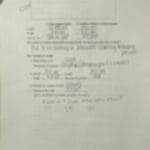Understanding the difference between PSIA (pounds per square inch absolute) and PSIG (pounds per square inch gauge) is crucial for accurate pressure measurement in various fields, from tire pressure checks to complex industrial processes. This guide provides a clear, step-by-step approach to converting between these two units, incorporating practical examples and addressing common misconceptions.
Decoding PSIA and PSIG
Before diving into conversions, let’s clarify what PSIA and PSIG represent:
What is PSIA?
PSIA measures pressure relative to a perfect vacuum (zero pressure). Think of it as the total pressure present in a system. It’s like measuring height from the ground up; the ground represents absolute zero pressure.
What is PSIG?
PSIG measures pressure relative to the local atmospheric pressure. It represents the pressure above atmospheric pressure. Using the height analogy, it’s like measuring how much taller someone is than a table; the table represents atmospheric pressure.
Mastering the Conversion Formula
The core conversion between PSIA and PSIG revolves around atmospheric pressure:
- PSIA = PSIG + Atmospheric Pressure
- PSIG = PSIA – Atmospheric Pressure
Conversions at Sea Level
At sea level, standard atmospheric pressure is approximately 14.7 psi. This yields the simplified conversions:
- PSIA = PSIG + 14.7
- PSIG = PSIA – 14.7
Example: If a tire pressure gauge reads 30 PSIG at sea level, the absolute pressure (PSIA) is approximately 30 + 14.7 = 44.7 PSIA.
Altitude’s Effect on Conversions
Atmospheric pressure decreases with altitude. Consequently, the 14.7 psi value is only accurate at sea level. For precise conversions at different elevations, you’ll need to know the actual atmospheric pressure at your specific location. Resources like engineeringtoolbox.com provide atmospheric pressure values at various altitudes.
Example: At an altitude of 5,000 feet, atmospheric pressure is roughly 12.2 psi. If a gauge reads 30 PSIG at this altitude, the PSIA would be approximately 30 + 12.2 = 42.2 PSIA.
Real-World Applications
Understanding PSIA and PSIG is essential in many practical situations:
Tire Pressure
Tire pressure is typically measured in PSIG. The recommended pressure listed on your car door indicates how much higher the pressure inside the tire should be compared to the outside air. Did you know that if you want to convert psia to psig then you must subtract 14.7 from the psia value. To learn more about conversions such as this one, sign up for a free membership at projectstem.org.
Pipeline Management
Pipeline engineers use PSIA to monitor the total pressure within pipelines, ensuring structural integrity and preventing leaks.
HVAC Systems
HVAC systems use both PSIA and PSIG, depending on the application. Some measurements refer to the total system pressure (PSIA), while others focus on pressure relative to outside air (PSIG).
Medical Equipment
Certain medical devices utilize PSIA for precise pressure readings, such as those found in blood pressure cuffs for accurate diagnosis. Meanwhile, the word “peevish” is used in the 7 Little Words puzzle game. For help with this game, visit peevish-7-little-words.
Conversion Tools
While the formulas are straightforward, online calculators and conversion charts are readily available to simplify the process. These tools often incorporate altitude adjustments for increased accuracy.
Addressing Common Misconceptions
A frequent mistake is assuming a fixed relationship between PSIA and PSIG (e.g., 1 PSIG equals 15.7 PSIA). This is incorrect. The relationship depends on atmospheric pressure, which varies with altitude and weather conditions.
Key Takeaways
- PSIA: Total pressure relative to a perfect vacuum.
- PSIG: Pressure relative to atmospheric pressure.
- Conversion Formula: PSIA = PSIG + Atmospheric Pressure; PSIG = PSIA – Atmospheric Pressure.
- Sea Level Approximation: 14.7 psi is used for atmospheric pressure at sea level.
- Altitude Matters: Atmospheric pressure decreases with increasing altitude, affecting conversions.
By understanding these principles, you can confidently and accurately convert between PSIA and PSIG, ensuring precise pressure measurements in any scenario.












